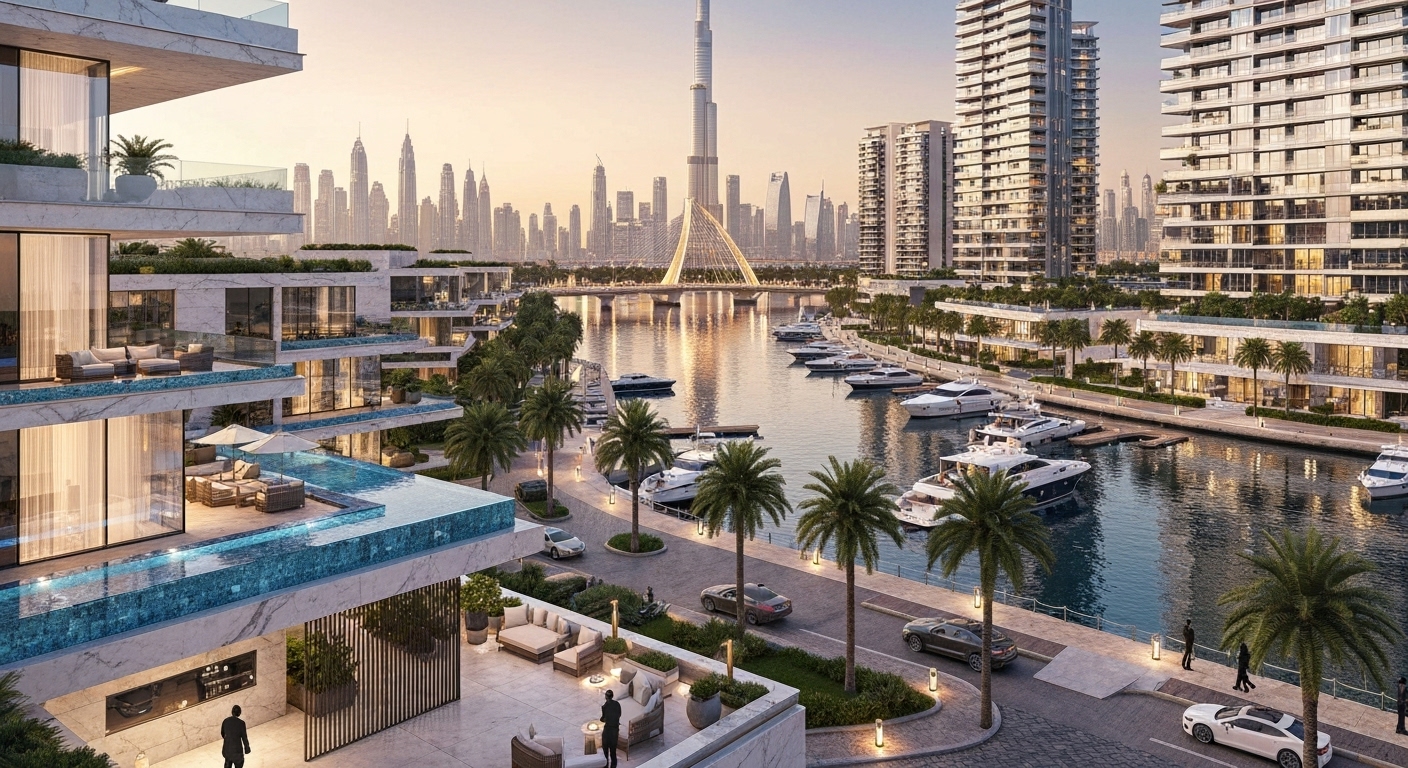The Dubai real estate market continues to demonstrate exceptional resilience in 2025, outpacing global averages and offering investors unprecedented opportunities. However, as we navigate an increasingly complex global economic landscape, sophisticated investors understand that even the strongest markets require careful portfolio evaluation. Stress-testing your Dubai property investments isn’t about pessimism—it’s about strategic preparation and optimization.
Understanding the 2025 Dubai Real Estate Landscape: Key Market Predictions
Dubai’s property market in 2025 is characterized by sustained momentum, backed by investor confidence, progressive regulatory reforms, and strategic infrastructural developments. The market has already validated expert predictions of continued growth, with demand remaining robust across both residential and commercial segments.
Current indicators suggest the market is well-positioned to continue outperforming global alternatives through the remainder of 2025. The combination of population growth, investor-friendly policies, and infrastructure development creates a compelling value proposition even amid global economic turbulence. However, the substantial price appreciation of the past 18 months suggests more moderate growth ahead, making strategic planning essential.
What is Property Portfolio Stress Testing and Why is it Crucial for 2025?
Stress testing involves simulating various adverse market scenarios to evaluate how your property portfolio would perform under challenging conditions. Unlike traditional risk assessment, stress testing provides concrete insights into potential vulnerabilities and helps identify opportunities for optimization.
For Dubai property investors in 2025, stress testing serves as a strategic tool for wealth preservation and growth acceleration. Given the emirate’s position as a global investment hub experiencing significant capital inflows, understanding your portfolio’s resilience helps you capitalize on market dynamics while protecting against potential downturns.
Identifying Potential Stress Factors for Your Dubai Property in 2025
Several key factors could impact Dubai property performance in 2025. Global economic turbulence remains a primary consideration, as international markets experience volatility that could affect investor sentiment and capital flows. Interest rate fluctuations, particularly potential cuts expected in early 2026, could influence borrowing costs and investment patterns.
Market oversupply in specific segments poses another consideration, though Dubai’s careful balancing of supply with genuine demand suggests this risk remains manageable. Changes in foreign buyer composition and regulatory adjustments could also create short-term market shifts that prudent investors should anticipate.
Practical Stress-Testing Scenarios for Your Dubai Portfolio
Effective stress testing involves modeling specific scenarios that could impact your investments. Consider a scenario where global economic uncertainty reduces foreign investment by 20-30% over six months. How would this affect your property values and rental yields?
Another critical scenario involves interest rate increases that make financing more expensive for buyers, potentially slowing market velocity. Model how a 15-20% reduction in transaction volume might impact your exit strategies and liquidity requirements.
Evaluate sector-specific stress factors by examining how economic shifts might affect different property types differently. Luxury segments may prove more resilient due to high-net-worth individual demand, while mid-market properties might offer more stable rental yields during uncertain periods.
Mitigating Risks: Strategies to Fortify Your Investment Against Market Shifts
Portfolio diversification across Dubai’s various submarkets provides the first line of defense against localized risks. Focus on properties with strong rental potential and locations benefiting from infrastructure improvements, as these tend to maintain value during market corrections.
Maintain adequate liquidity reserves to take advantage of market opportunities that stress periods often create. The diversification of investor nationalities in Dubai’s market indicates broader resilience, suggesting that geographic diversification of your tenant base can provide additional stability.
Consider timing strategies that align with market cycles. The second half of 2025 may offer strategic opportunities before potential interest rate cuts drive further price increases in early 2026.
Leveraging Danube Properties for a Resilient Dubai Property Portfolio
Danube Properties has established itself as a strategic partner for investors seeking to build resilient portfolios in Dubai’s dynamic market. The company’s market-responsive strategy and proven delivery record support Dubai’s larger narrative as a trusted investment hub for high-net-worth individuals.
Danube’s diverse project portfolio, ranging from accessible luxury options to premium developments, provides investors with multiple entry points across different market segments. This diversity, paired with innovative payment plans and strong governance, makes Danube properties particularly attractive for wealth preservation strategies.
Beyond 2025: Long-Term Outlook and Continuous Portfolio Optimization
The outlook for Dubai’s real estate market points toward sustainable growth rather than speculative bubbles. The careful regulatory oversight and strategic development approach suggest a market poised for steady appreciation without the volatility seen in previous cycles.
Dubai’s integrated investment ecosystem presents a balanced proposition for wealth preservation and growth, with real estate serving as a strategic foundation for broader wealth diversification. The emirate’s development of complementary sectors creates natural pathways for portfolio expansion beyond traditional asset classes.
Regular stress testing should become part of your ongoing investment strategy, allowing you to adapt to changing market conditions while maintaining a strong position in one of the world’s most dynamic property markets.




